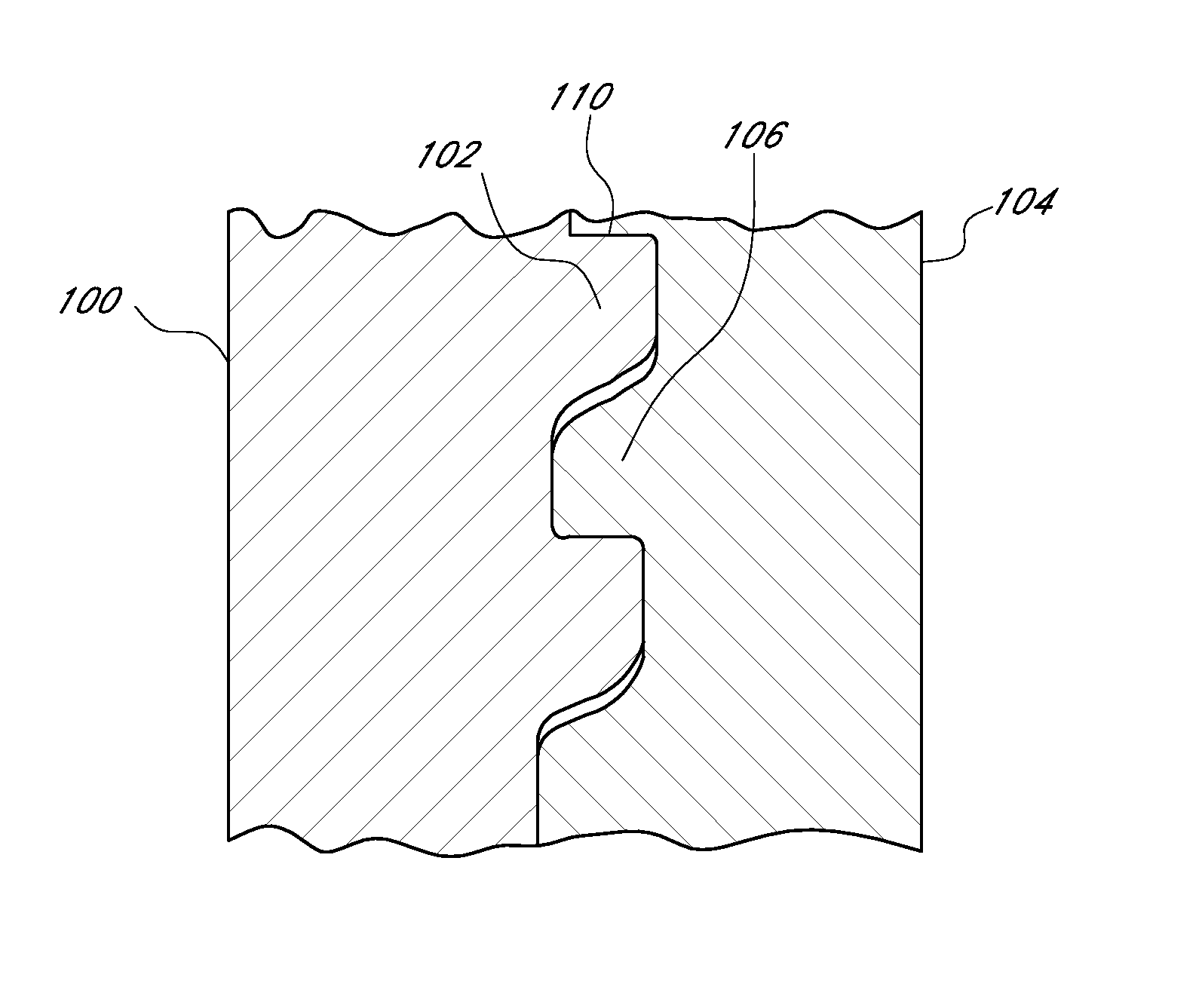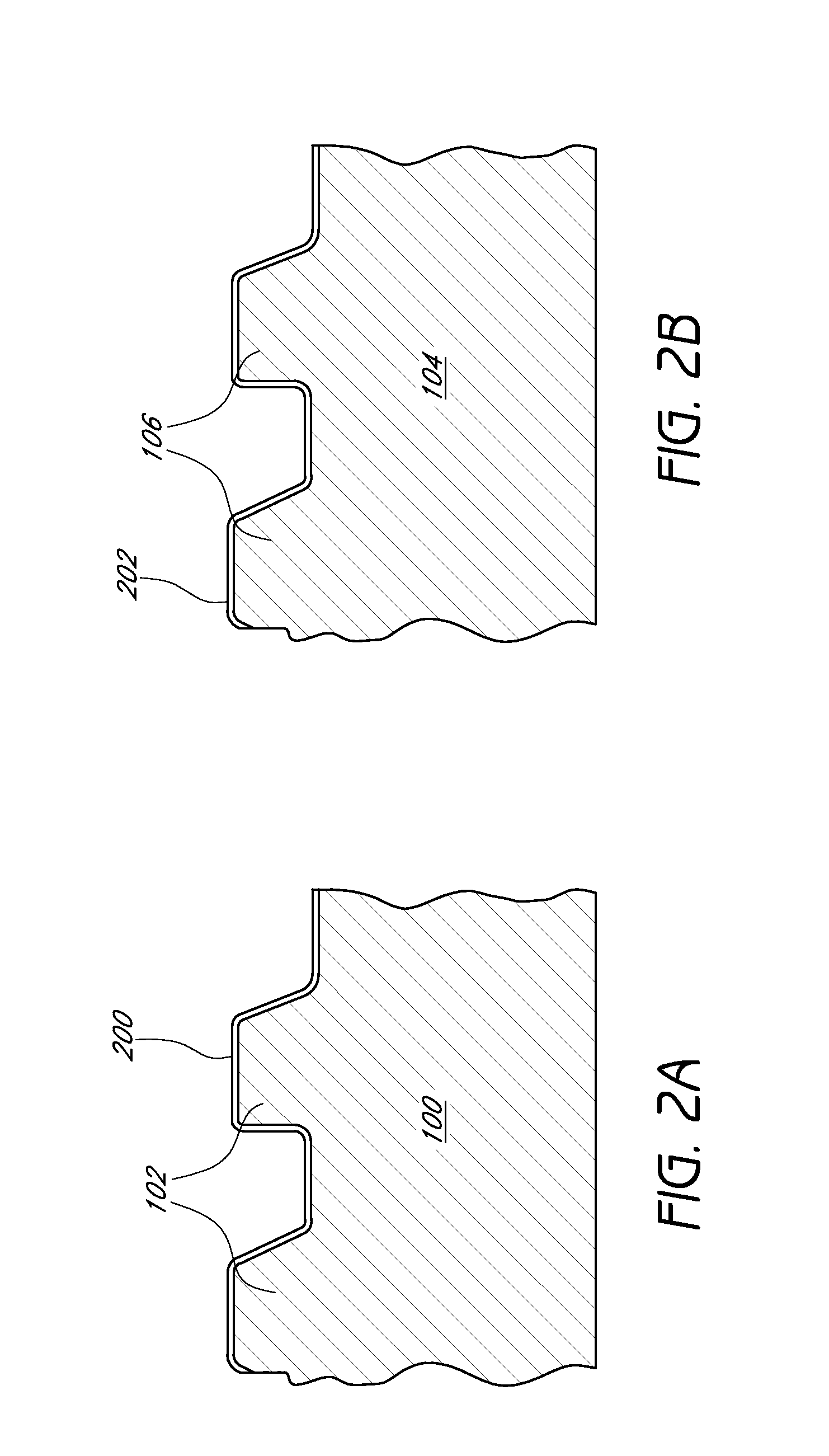Nanocomposite coatings for threaded connections
a nanocomposite coating and threaded connection technology, applied in the direction of synthetic resin layered products, drilling pipes, pipe elements, etc., can solve the problems of slipping contact between the threads and other surfaces of the pipes, significant drawbacks of dope, environmental hazards,
- Summary
- Abstract
- Description
- Claims
- Application Information
AI Technical Summary
Benefits of technology
Problems solved by technology
Method used
Image
Examples
example 1
Cross-Cut Tape Tests—Graphite / Polyimide Compositions
[0143]The cross-cut tape test was used to characterize the adhesion of the coating according to ASTM D3359-02, “Standard Test Methods for Measuring Adhesion by Tape Test”. According to the standard, a bladed cutting tool is used to make the cross-hatch cuts in the coating deposited on the substrate. Subsequently, an adhesive tape is placed over the cut surface and then peeled off. If parts of the coating remain on the tape, the coating's adhesion is determined to be insufficient.
[0144]The classification of test results is done by a visual comparison with the Standard, which defines the affected area of the test section in terms of the percentage of the coating which is detached from the surface by the pull-off tape. A rating of 0 through 5 classifies the adhesion of the test sample section from 100% pass (0) to fail (5), where more than 65% of the test area delaminates from the surface.
[0145]The Cross Cut Tape Test showed good adhe...
example 2
Tribological Characterization—Graphite / Polyimide Nanocomposites
[0146]The influence of the solid state lubricants and the reinforcement on the friction and wear of the nanocomposite was examined through pin-on-disc tribometer testing according to DIN 50324. Approximate testing parameters comprised P=2 N, v=10 cm / s, 10 cm / s, r=15 mm, and s=1000 m. Coating systems TP9, TP13, TP14, and TP15 were investigated, each having approximately equal amounts of D10H, about 1.5 g. Notably, the TP9 sample lacks the SiC reinforcement.
[0147]The results of the pin-on-disc testing are presented in FIG. 5 and summarized in Table 1 above, where k is the wear resistance. From FIG. 5 it can be derived that, with graphite as solid state lubricant, coefficients of friction in the ranged of μ=0.1-0.2 were obtained. The measured wear coefficients were found to be around k=2.5*10−4 mm3 / Nm. The low wear resistance for graphite containing coatings is believed to be caused by the intrinsic softness of graphite, wh...
example 3
Surface Roughness—Graphite / Polyimide Coating Systems
[0148]An important tribology topic is the question of how the surface roughness influences the friction behavior. As friction and wear are generally concurrent processes, wear debris generally starts developing from the point when a sliding process occurs on a surface. These debris increase the friction coefficient dramatically and, therefore, it is important that they are removed away from the sliding path. This removal is done by the collection of the debris in the depressions of the surface roughness. Since wear depends also on the surface roughness, with rough surfaces producing more wear debris than smooth surfaces, there may be determined a range of surface roughness which substantially optimizes the wear / friction balance. This effect can be seen in the surface with the lowest friction coefficient.
[0149]In the polyimide system, the surface roughness is modified and substantially optimized by using the polymeric carbon fluorin...
PUM
| Property | Measurement | Unit |
|---|---|---|
| mean diameter | aaaaa | aaaaa |
| mean diameter | aaaaa | aaaaa |
| wt. % | aaaaa | aaaaa |
Abstract
Description
Claims
Application Information
 Login to View More
Login to View More - R&D
- Intellectual Property
- Life Sciences
- Materials
- Tech Scout
- Unparalleled Data Quality
- Higher Quality Content
- 60% Fewer Hallucinations
Browse by: Latest US Patents, China's latest patents, Technical Efficacy Thesaurus, Application Domain, Technology Topic, Popular Technical Reports.
© 2025 PatSnap. All rights reserved.Legal|Privacy policy|Modern Slavery Act Transparency Statement|Sitemap|About US| Contact US: help@patsnap.com



